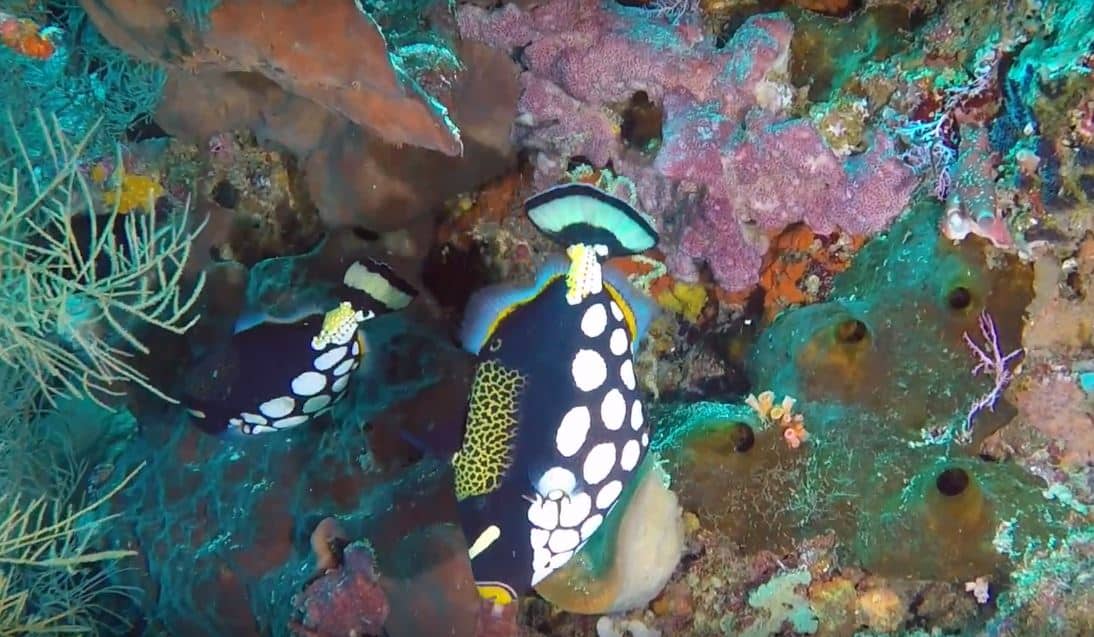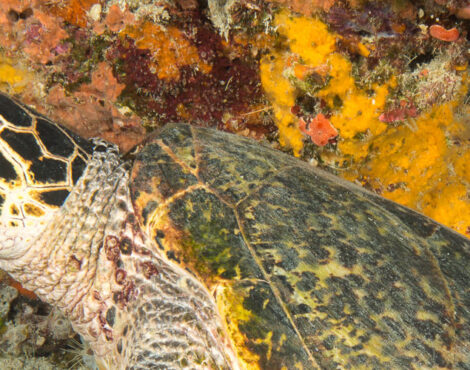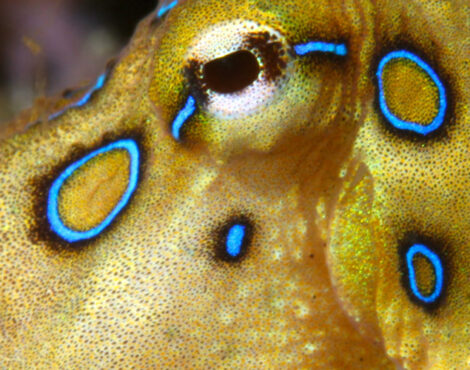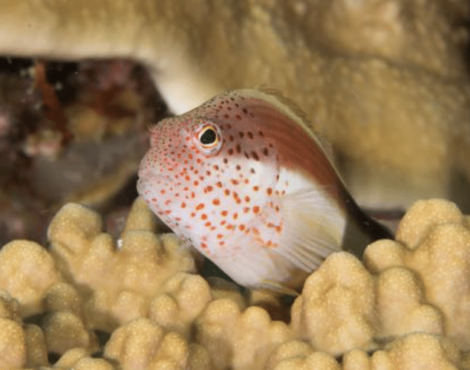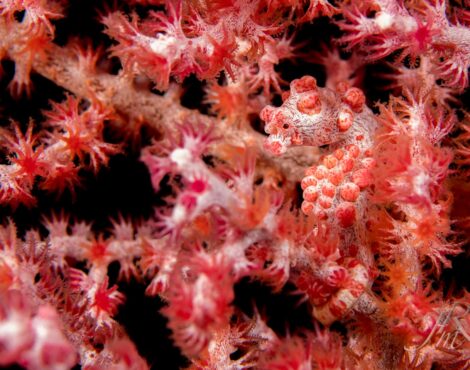North Sulawesi is undoubtedly most famous for its amazing macro life. With Bunaken, Manado Bay, Bangka, and the Lembeh Strait all being so easy to access from Manado airport, it is easy to see why this region attracts macro enthusiasts and underwater photographers from all over the world.
That doesnât mean that is all the area has to offer, and it is quite common for divers to completely ignore everything that either isnât macro or pelagic, which is a shame, considering that Bunaken Marine Park has among the highest marine biodiversity on the planet.
There are thousands of reef fish species living on the deep walls found throughout the marine park, and we think they deserve a little more love than they receive from most divers.
So today, we will focus on one of the more common fish families encountered throughout Bunaken Marine Park â Triggerfish.
 What are Triggerfish?Â
Around 40 species of fish make up the family Balistidae, or more commonly known as triggerfish. Almost all of them are reef dwelling fish, however there are a handful of pelagic species too â a couple of which can be found throughout Indonesia, although rarely spotted by divers or snorkellers.
Triggerfish vary in maximum size from as little at 20 centimetres fully grown, to as large as one metre, however the average size for most species is around 50 centimetres. They are one of most easily identified fish, with common traits found throughout the entire family.
They have a fairly compressed, diamond shaped body, with a large head that makes up roughly a third of their entire body size. They have extremely strong jaws, and their eyes (which often bulge out of their head, and can be moved independently of each other) are set unusually far back from the mouth, and very close to the top of their head. Most species are very colourful and tend to have distinctive markings, such as stripes, spots, or a combination of the both.
One of their most identifiable features is their fins and the way they swim.
Unlike most other fish â which use their caudal (tail) fin for swimming â triggerfish swim via balistiform locomotion, where they undulate their posterior and anal dorsal fins to move slowly and with great stability. When needed, they will use their caudal fin for a burst of speed.
They have two retractable dorsal spines. The anterior (first) spine can be locked in place by the second, and can only be unlocked by depressing the second, hence the name âtriggerâ fish. These spines are used for protection, as when they sleep, they force their way into a crevice on the reef and lock their first spine so they cannot be pulled out by a predator. They also raise their anterior spines to warn off any potential threats.Â
Triggerfish in Bunaken Marine Park.Â
Bunaken Marine Park is home to a number of triggerfish species â and below is a list of some of the more common encounters, but in no way is this list definitive.
Redtoothed Triggerfish â Odonus nigerÂ
Redtoothed triggerfish can be seen at every dive site throughout the park. They are dark blue in colour, with a lighter blue crescent tail, and distinctive red teeth. They tend to live away from the wall, and on sites that tend to have a lot of current like Sachiko Point, they can be found in their thousands. During night dives, it is common to see their tail poking out of the reef as they sleep.Â
Clown triggerfish â Balistoides conspicillumÂ
Probably the most beautiful of all the triggerfish, the clown trigger fish is very distinctive in its colouration. They are mostly black, with a yellow maze pattern near the top of their body, and the lower half of the body is marked with large white spots. They have an orange/yellow ring surrounding their mouth, and a pale stripe under their eyes. Their dorsal fins have orange markings where they connect to the body, and they have a yellowish caudal fin with black margins.
 One of the more shy species, they can be difficult to approach, and even more difficult to photograph.Â
Orange-lined Triggerfish â Balistoides undulatus
 Another stunning species, and at a maximum length of 30 centimetres, they are one of the smaller triggerfish. They have a pale to dark green body with bright orange lines running though it, a light caudal fin, again with orange lines, and their dorsal and anal fins are almost transparent, which they undulate at great speed.Â
Picasso Triggerfish â Rhinecanthus aculetusÂ
Again, a beautiful example of the triggerfish, however this one is less commonly seen by divers, although they can be found in Bunaken Marine Park in large numbers.
They tend to inhabit seagrass meadows and shallow reefs, so you are more likely to spot one while snorkelling â there are many living only a few metres from the beach at Siladen Resort & Spa.
They are very easy to recognise by their small size, and extremely abstract colouration, hence the name âPicassoâ. Their heads tend to be a light beige colour, and it fades into a darker brown towards the tail end. They are covered in random lines which range in colour from black to orange, and even neon blue. It is defiantly worth taking out your mask and fins to have a look at these beauties when you take an afternoon off diving.Â
Yellowmargin Triggerfish â Pseudobalistes flavimarginatusÂ
One of the larger triggerfish species we see regularly throughout Bunaken Marine Park, the yellowmargin lives builds its nest on any sloping sandy/rubble area it can find.Â
Easily recognised by its large size, pale green body and pastel orange/yellow mouth markings, and an orange fin. We find many of these on the Sulawesi mainland during spawning season, and they can normally be spotted on sloping walls such as Depan Kampung or Fukui.
Titan Triggerfish â Balistoides viridescensÂ
By far the largest triggerfish species we find around here, and one of the largest triggerfish species in the world, the titan triggerfish lives up to its name by growing to a maximum length of 75 centimetres.Â
A solitary species, the titan triggerfish is easy to recognise by its large size, brown and yellow patchwork body and a yellow upper head. The fins are also yellow with brown margins, and the first dorsal spine is particularly prominent.
Are Triggerfish Aggressive?Â
Triggerfish are infamous among divers and snorkellers for their temperament, and rightfully so for some species.
They are extremely protective of their nests, and will often chase anything away that comes too close, including divers. In Bunaken, the only species that could cause any real damage are the larger yellowmargins and titans, while the clown and orange-lined are not at all aggressive towards humans.
If you get too close to a nest, they will let you know by erecting their first dorsal spine and swimming close to you. If you donât get the message, they will swim very fast towards you, only turning away at the last second.
In this situation, the best thing to do is turn on your back, and swim away slowly while watching what it does. In some areas, triggerfish can be extremely aggressive and chase divers across a whole dive site, and in extreme situations, all the way to the boat ladder. Luckily around Bunaken, they are not like this, and will leave you alone as soon as you leave their territory.
Whenever you spot a triggerfish acting aggressively, your best action is to follow your dive guide. The guides know where the triggerfish like to nest, and how to safely leave the area.Â
Triggerfish Intelligence.Â
Another unusual feature of the triggerfish is their intelligence, which is much higher than most other fish. They have shown an ability to learn from past experiences, and can remember certain individuals, and with their temperament, this is not always a good thing.
Certain individuals have been spotted performing tasks that other members of the same species have not learnt, such as finding ways to harvest difficult to eat sea urchins, or lifting bivalves high up into the water column and dropping them onto a hard surface to crack the shell.
What do Triggerfish Eat?Â
All species are carnivorous, feeding on a diet that consists mainly of crabs, shrimp, worms, and other invertebrates. Their unusual propulsion method helps them point head down and stir up the sand, allowing them access to buried prey. They are also known to pester and threaten other reef fish into giving them the scraps from their meal. While they will never actively hunt other fish to eat, they are opportunistic and will eat any dead fish they might happen to stumble (or swim) upon.
Some of the larger species may even break off chunks of coral to get to any crabs or shrimp that may be hiding inside, and they will chew the coral to prevent their ever growing front teeth from getting too large. While this may seem destructive to the reef, they are actually important to the health of the reef, as they trim away the faster growing coral species, which allows the slower growing species time to catch up.

